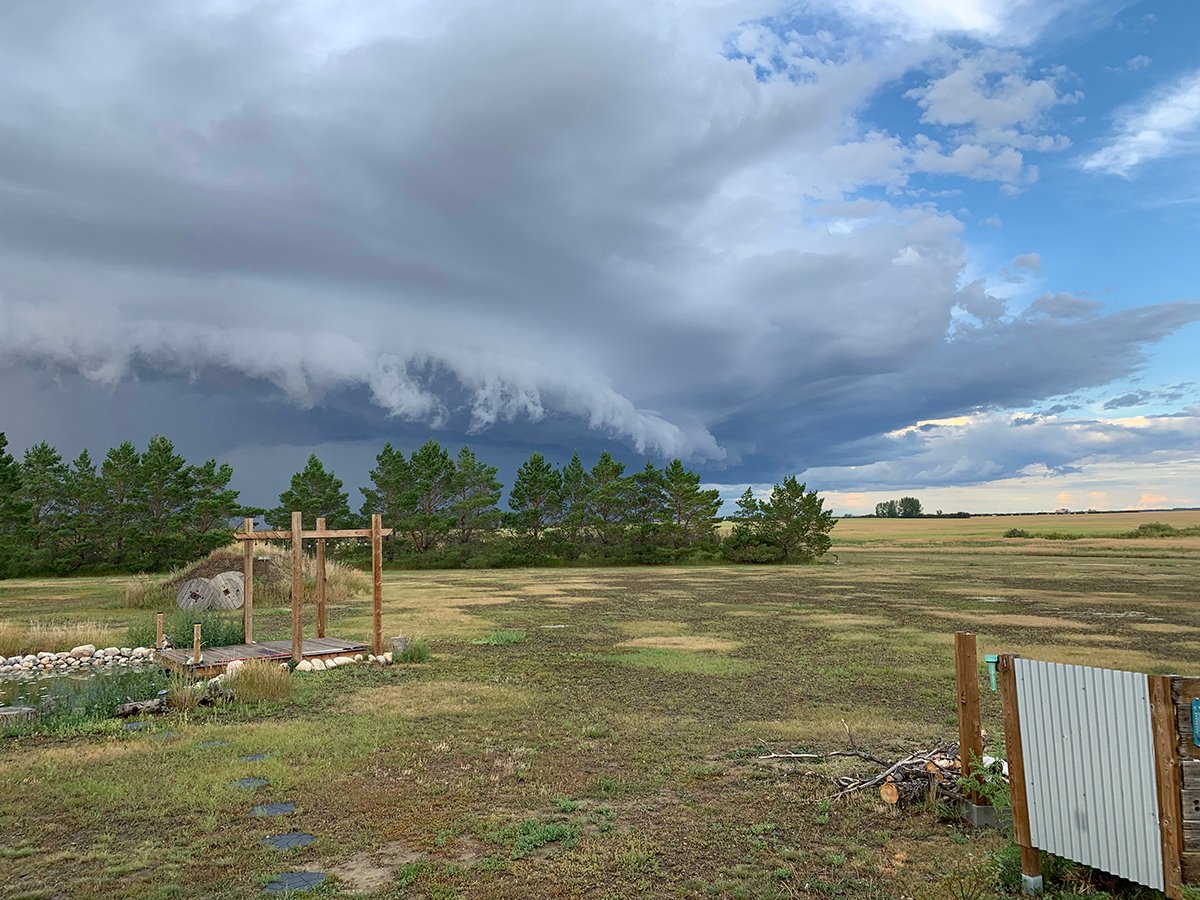Air movement within an orchard can significantly affect commercial fruit production. An excess or lack of air movement can result in physical or physiological damage to sensitive plant parts and reduce yield and quality.
Wind is the most common source of excess air movement in an orchard.
“High winds can break tree limbs, disperse straw and snow cover used for winter protection and disrupt field equipment,” said Robert Spencer, an irrigated and specialty crop specialist with Alberta Agriculture.
“It can also cause physical damage to plants and fruit. As well, prolonged exposure to prevailing winds increases the risk of desiccation, as high winds accelerate water movement through crop plants, resulting in an increase in water use.”
Read Also

Storm dynamics and extreme rainfall
Besides moisture, instability and orographic lift, the next biggest factor that contributes to heavy or extreme rainfall is storm dynamics.
During the growing season, high winds can prevent or reduce insects’ pollinating activity. For example, honeybee flight is reduced when average wind speeds exceed 16 km-h or gust above 24 km-h.
“To reduce the impact of excess air movement, plantings should be oriented to compensate for prevailing winds, and adequate shelterbelts should be in place,” Spencer said.
“Slowing down air movement will prevent damage, such as by breakage and physical contact between fruit, and can increase snow accumulation. The general rule of thumb is one metre of height (protection) will provide 10 m of sheltered area.”
While too much air movement is a problem, lack of air movement is equally undesirable. No air movement can increase relative humidity, frost risk and the prevalence of disease and insect pests.
“Fields and orchards should be oriented to allow some air drainage within the planting, so that cold air does not settle at night and damage emerging flowers and sensitive plant parts,” Spencer said.
“Fields should follow the contour of the land. Planting on a slope of three to five percent will allow a sufficient amount of air drainage and reduce the risk of frost injury.”
Shelterbelts should not completely restrict airflow because this can result in a buildup of humidity that can accelerate disease and insect development. Leaving some gaps in the shelterbelt will reduce wind problems while still allowing some air flow and ventilation. As well, inadequately pruned plantings can result in increased disease levels because humidity and temperature can build up within the microclimatic zone of the tree canopy if there isn’t sufficient air movement.
“Bottom line is that it is extremely important to maintain air movement and ventilation,” Spencer said. “Proper ventilation and air movement should always be a consideration when establishing a new planting.”














